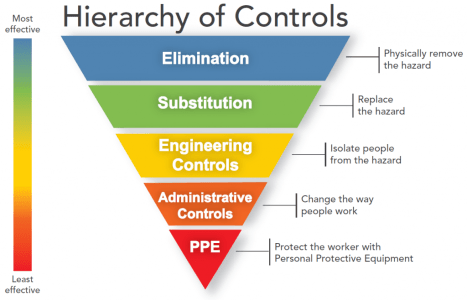Sound Pressure, Sound Power, and Sound Intensity Explained

We are all familiar with sounds in everyday life. Some sounds are pleasant, and some sounds can be destructive. Sound has exponents of pressure, power, and intensity. In this blog, I will go over each one to see how we perceive sound and are affected by it.
Sound pressure is what our ears pick up. The small bones in our ears detect pressure changes with our eardrums to convert to noise signals. In looking at a single source, sound pressure is created by sound waves. . In looking at a single source, sound pressure is created by sound waves. The units are measured in Pascals. The lowest pressure perceived by human ears is 0.00002 Pa, and we can use this value as a reference point. Depending on the frequency, pain can occur at 65 Pa. We can arrive at a sound pressure level which is measured in decibels, dB. This correlation between sound pressures and sound pressure levels is calculated by Equation 1.
Equation 1:
L = 20 * Log10 (P / Pref)
L – Sound Pressure Level, dB
P – Sound pressure, Pa
Pref – reference sound pressure, 0.00002 Pa
Sound pressure has to be measured at a certain distance. Like a wave in a pond, the farther the distance, the smaller the waves. Most standards are set at 1 meter away. As an example, the sound pressure from a passenger car as heard from the roadside is 0.1 Pa. With Equation 1, we can get the following decibel level:
L = 20 * Log10 (0.1Pa / 0.00002Pa) = 74 dB
Sound power deals with the amount of energy that is generated at the source, which is independent of distance. There is an old saying, “if a tree falls in the forest and no one is nearby, does it make a sound?”. Well, it does. Even though you may be too far away from the source to detect the sound pressure waves, it still creates a sound. Sound power is important to measure noise in different locations around the source. This will help to ensure proper protection for the workers in the different areas. The unit of measure for sound power is watts (W). Equation 2 shows the formula to calculate sound power levels. This equation also uses a reference point which was determined by a standard to be 1 pW or 1 * 10-12 Watts.
Equation 2:
LN = 10 * Log10 (p / pref)
LN – Sound Power Level, dB
p – Sound power, W
pref – reference sound power, 1 * 10-12 W
As an example, a jet engine can generate roughly 1 watt of sound power. From Equation 2, we get a sound power level of
L = 10 * Log10 (1 W / 1 * 10-12 W) = 120 dB
To avoid confusion with sound pressure levels, we usually use the unit of bel (B) rather than decibel (dB). So, the jet engine would produce a sound power level of 12 Bel.
Sound intensity is defined as sound power per unit area; it is commonly measured in Watts per square meter, W/m2. The formula is shown in Equation 3.
Equation 3:
I = p / A
I – Sound Intensity W/m2
p – Source power, W
A – Area from source, m2
From the sound source, the sound intensity is developed by the direction the sound “flows” through a particular area. If you have ever seen a band trying to setup their sound system, they take into account walls, the size of the room, open areas, speaker angles, etc., to enhance the sound. The sound pressure, or loudness, will travel through a median at a distance, which could encounter walls, machines, ceilings, etc. Let’s look at the sound power of the jet engine above at 1 Watt. If a plane was flying 1,000 meters (3,300 feet) above your head, you could find the sound intensity. First, sound travels in all directions; so, we will use the surface area of a sphere, 4πr2 to calculate the area. Since the source is at the center, the distance to the person will be the radius. So, at 1,000 meters, the area will be 4 * 3.14 * (1,000 m)2 = 12,560,000 m2. We can deduce from Equation 3 that
I = p / A = 1 W / 12,560,000 m2 = 7.96 * 10-8 W/m2.
To correlate this to the sound intensity level, which your ears perceive, it is measured in decibels, dB, and is represented by Equation 4.
Equation 4:
Li = 10 * Log10 (I / Iref)
Li – Sound Power Intensity, dB
I – Sound intensity, W/m2
Iref – reference sound intensity, 1 * 10-12 W/m2
With the example above of the jet engine that is 1,000 meters above our head, we can calculate the sound level that our ears can hear. From Equation 4, we have
Li = 10 * Log10 (7.96 * 10-8 W/m2 / 1 * 10-12 W/m2) = 49 dB

Hearing loss is permanent; and it is the most recorded occupational illness in manufacturing plants. The Occupational Safety and Health Administration (OSHA) is the enforcement agency responsible for determining and fining companies that violate this directive; 29 CFR 1910.95(a). To keep your operators safe, it is important to measure the sound level of your pneumatic equipment. NIOSH, or the National Institute for Occupational Safety and Health, uses a Hierarchy of Controls for dealing with safety issues. And the Engineering Controls is more prevalent on this chart than purchasing personal protective equipment or PPE (reference diagram above). EXAIR manufactures these engineered products for safety, noise reduction, and cost savings. They are known as the Intelligent Compressed Air Products®. To minimize any hearing loss with personnel, EXAIR has a variety of Super Air Nozzles, Safety Air Guns, Super Air Amplifiers, and Super Air Knives that can reduce the sound levels to a safe level. And as a bonus, it will save you money by reducing your compressed air usage. You can talk with one of our Application Engineers if you wish to reduce the surrounding sound levels with your pneumatic blow-offs.
John Ball
Application Engineer
Email: johnball@exair.com
Twitter: @EXAIR_jb
Photo of Ear auricle Listen by geralt. Pixabay License



